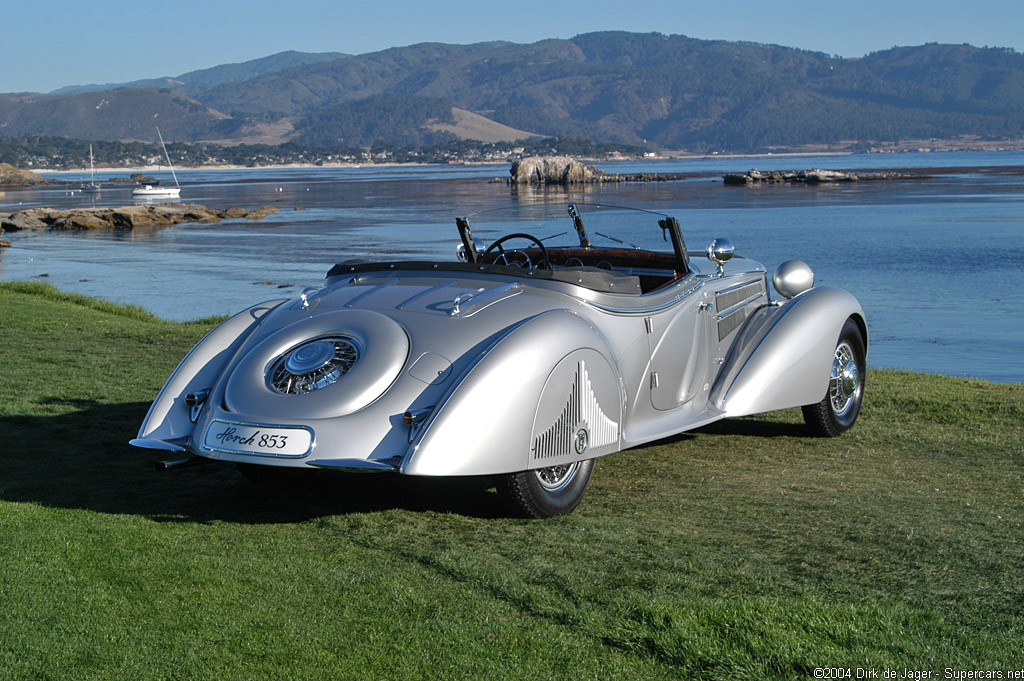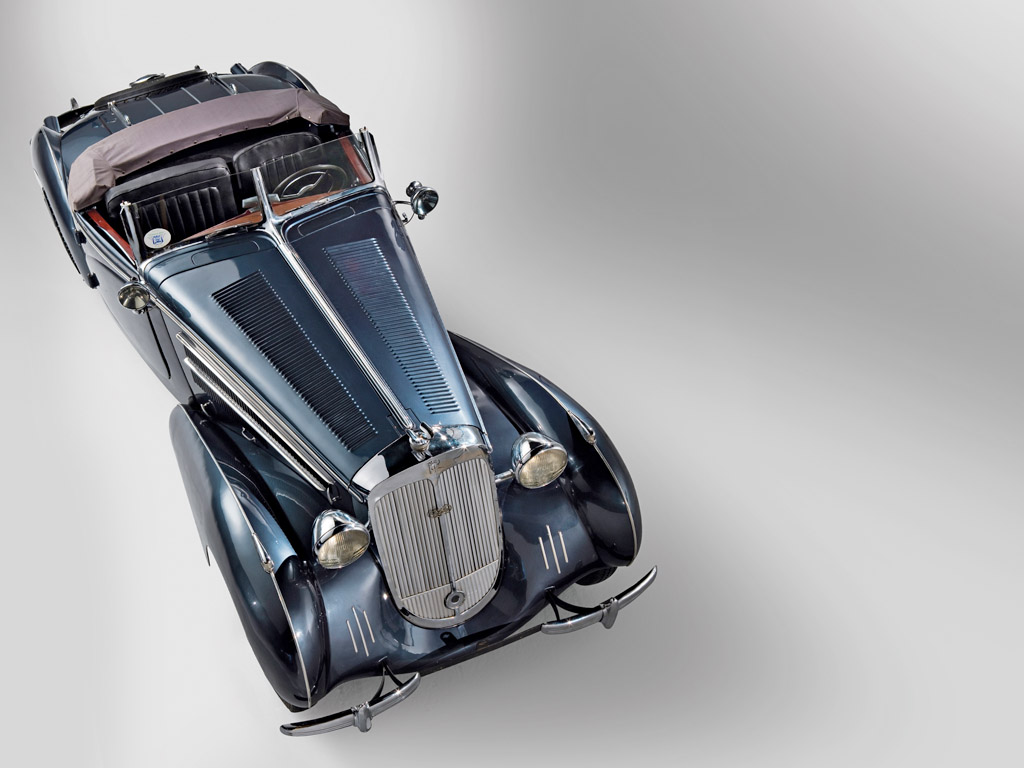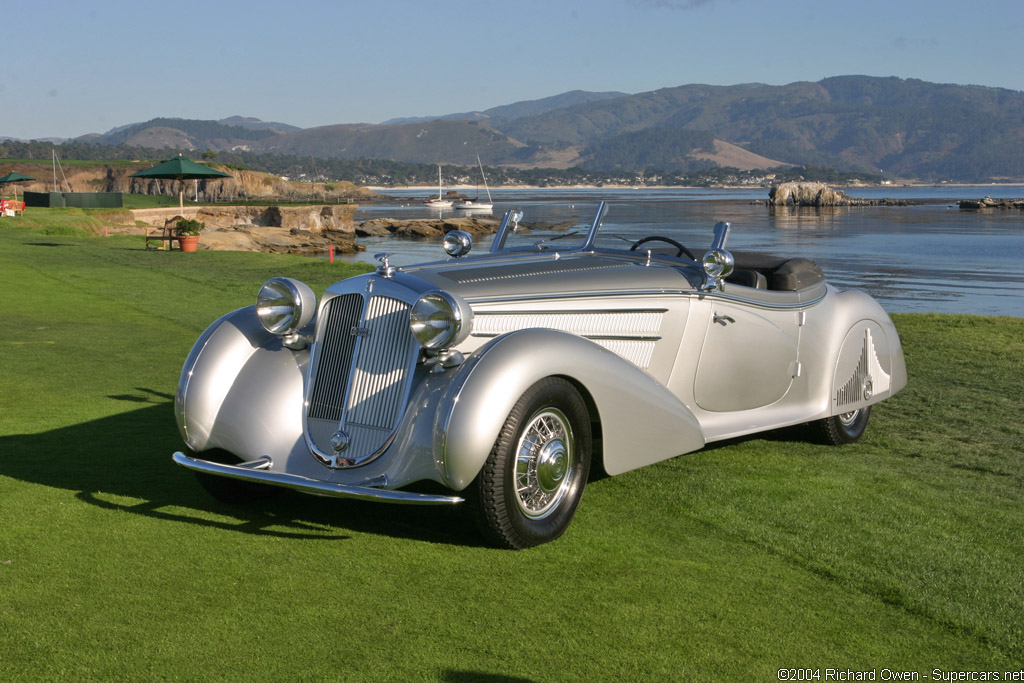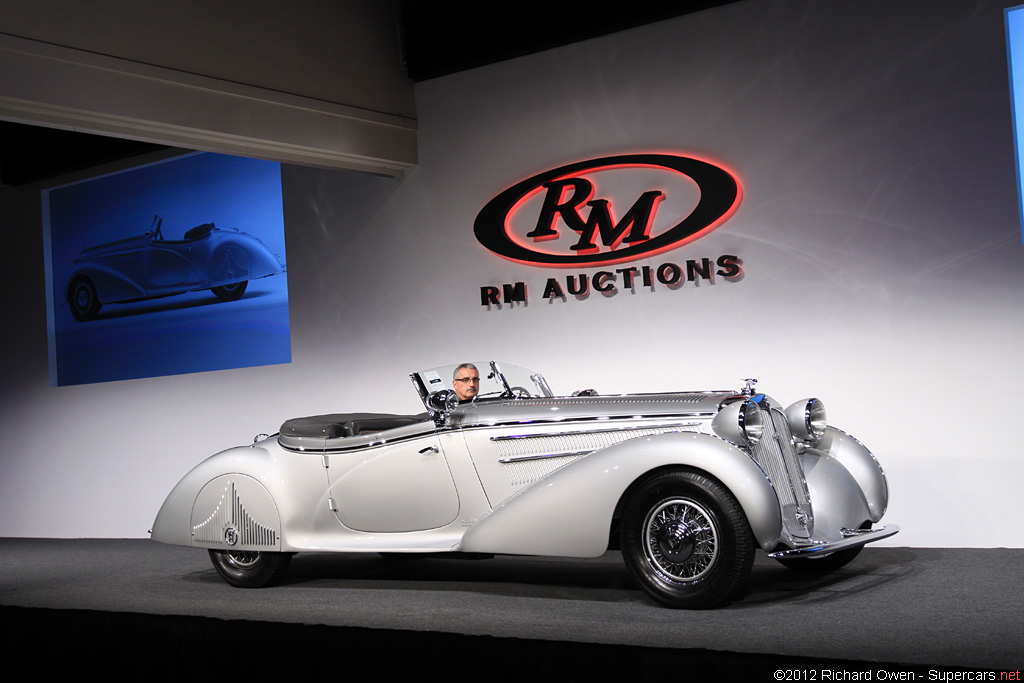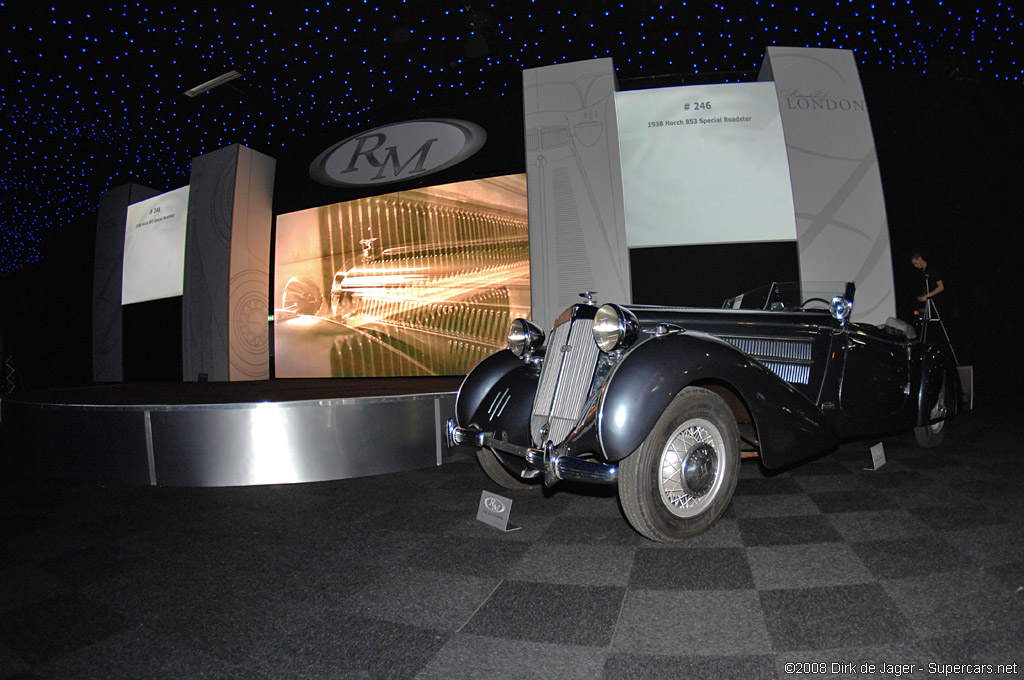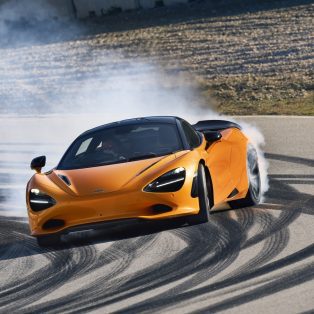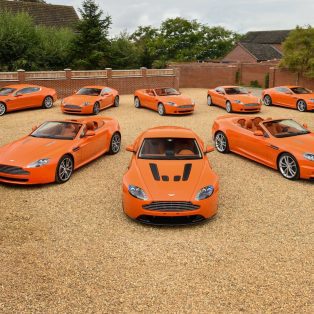1937→1940 Horch 853A Sportroadster
To compete with the luxury cars of Mercedes-Benz and even some great French marques like Delahaye and Delage, the Auto-Union empire had Horch. After WW1, Horch represented the upper end of this conglomerate that also included Audi, DKW and Wanderer. The trend reached a peak in 1937 with the introduction of the 853A Spezial (or Special) Roadster.
The 853 can trace it’s roots back to 1926, when chief engineer Paul Daimler designed Germany’s first eight-cylinder production engine. Built with high-quality materials, it used a twin-cam valve train and was used right up to 1940. It helped Horch grow in the 1920s, leading to larger, more powerful versions. This peaked in 1937 when the 850 series offered 120 bhp.
Introduced in 1937, the 853A was a short-wheel base version of the 850. It used technology from the Auto-Union racecars and sold at a very competitive rate compared to Mercedes-Benz. Appointed with a complex de Dion-type rear suspension from Auto-Union’s Grand Prix program and Vacuum-assisted hydraulic brakes, the 853 had an advanced chassis.
The chassis was also long enough and produced enough power to attract the type of customers that would purchase elaborate bodies. Horch wanted to rival Mercedes-Benz’s Spezial Roadster, so they built one of their own. After being modeled in wood, the decision was made for the factory to produce a prototype from their facilities in Malan, Germany. Their design was highlighted by a long hood, sloping tail and impossibly low front windscreen. These imposing proportions where limited to a two-seat cabin of equal embellishment.
Immediately, production of the Horch’s own Spezial Roadster commenced. Berlin coachbuilders, Erdmann and Rossi where hired to produce the new body. They used steel over a metal and wooden-frame to support the structure. A small fabric roof was also hidden by a panel in the rear compartment.
Erdmann and Rossi produced a near-copy of the first prototype, but by the time the third car was made, they were given freedom to improve the design. A second-series design was made featuring pontoon fenders and more elegant lines. Eventually five of the updated Spezial Roadsters were produced, the first by order of Nazi leader Herman Göring. He had the car fitted with a bulletproof windscreen, but preferred his Mercedes, so the Horch was disassembled for the following four cars.
Chassis
Each of the Special Roadster was unique in detail, and some included louvered rear wing panels, blade-style bumpers and different interior designs. The series of five 853s was finished by a sole 855 Spezial Roadter. The cars are delineated by their commission numbers:
Commission Number 3164 – Restored by RM, this is the 2004 Pebble Beach Best in Show car owned by Joseph C. Cassini III. It was initially brought to the US by a World War II veteran who kept the car until 1969. The next owner, Herbert Von Fragstein, dismantled the car and it spent the next 30 years in pieces. Eventually RM Restorations spent two years and 12,000 man-hours to complete the car for the first time in decades. It debuted successfully at the 2004 Pebble Beach Concours.
Commission Number 3163 – Suffering a cheap restoration while at a Latvian Museum, the wooden body structure was replaced by a tube frame counterpart and the interior was rebuilt with wrong pieces. It sold at RM Auction’s 2008 London sale for £1,127,500 GBP or $1,785,883 USD.
Story by Richard Owen
1937 Horch 853A Sportroadster Gallery
See 1937 Horch 853A Sportroadster Gallery here
In Detail
| submitted by | Official Galleries |
| type | Series Production Car |
| production years | 1937 – 1940 |
| built at | Malan, Germany |
| body stylist | Horch |
| coachbuilder | Erdmann und Rossi |
| engineers | Paul Daimler |
| production | 7 |
| engine | Type T850 Straight 8 |
| position | Front Longitudinal |
| aspiration | Natural |
| valvetrain | SOHC, 2 Valves per Cyl |
| fuel feed | Solex 35 JFF Carburetor |
| displacement | 4944 cc / 301.7 in³ |
| bore | 87 mm / 3.4 in |
| stroke | 104 mm / 4.1 in |
| power | 89.5 kw / 120 bhp @ 3600 rpm |
| specific output | 24.27 bhp per litre |
| bhp/weight | 45.63 bhp per tonne |
| body / frame | Steel Body over Steel Frame |
| driven wheels | RWD |
| front brakes | Hydraulic Drums w/Vacuum Assist |
| rear brakes | Hydraulic Drums w/Vacuum Assist |
| steering | Worm & Nut |
| f suspension | Upper A-Arms w/Lower Transverse Leaf Springs, Hydraulic Shock Absorbers |
| r suspension | de Dion Axle w/Semi-Elliptic Leaf Springs, Hydraulic Shock Absorbers |
| curb weight | 2630 kg / 5799.15 lbs |
| wheelbase | 3450 mm / 135.8 in |
| front track | 1510 mm / 59.4 in |
| rear track | 1516 mm / 59.7 in |
| length | 5300 mm / 208.7 in |
| width | 1830 mm / 72 in |
| height | 1580 mm / 62.2 in |
| transmission | 4 Speed Sliding Gear w/Overdrive |
| top speed | ~135.16 kph / 84 mph |
Auction Sales History
Auction Source: Monterey 2012 by RM Auctions
Auction Source: 2008 RM Automobiles of London





